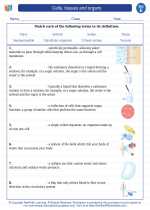Thermoregulation
Thermoregulation is the process by which an organism maintains its internal body temperature within a certain range, despite changes in the external environment. This is a crucial function for all living organisms, as maintaining a stable internal temperature is essential for the proper functioning of bodily processes.
Key Concepts
- Homeostasis: The body's ability to maintain a stable internal environment, including temperature regulation.
- Temperature Regulation: The mechanisms and processes through which the body controls its temperature.
- Regulatory Mechanisms: The physiological responses and behaviors that help to regulate body temperature.
- Thermoreceptors: Specialized nerve cells that detect changes in temperature and send signals to the brain.
Regulatory Mechanisms
The human body employs several mechanisms to regulate temperature:
- Sweating: The evaporation of sweat from the skin helps to cool the body.
- Vasodilation: Blood vessels near the surface of the skin dilate to release heat and cool the body.
- Shivering: Involuntary muscle contractions generate heat to warm the body.
- Behavioral Responses: Activities such as seeking shade or wearing extra layers of clothing to adjust to environmental temperature changes.
Human Thermoregulation
In humans, the hypothalamus, a region of the brain, is a central player in temperature regulation. It receives input from thermoreceptors and orchestrates the body's responses to maintain a stable internal temperature.
Impact of Disruptions
Disruptions to thermoregulation can have serious consequences. For example, heat stroke can occur when the body is unable to cool itself, leading to a dangerously high internal temperature. Conversely, hypothermia results from the body losing heat faster than it can produce it, leading to a dangerously low internal temperature.
Study Guide
As you study thermoregulation, consider the following key questions:
- What are the main mechanisms through which the body regulates its temperature?
- How does the hypothalamus contribute to thermoregulation?
- What are the potential consequences of disruptions to thermoregulation?
- How do different organisms adapt to temperature changes in their environments?
Be sure to review the regulatory mechanisms, the role of thermoreceptors, and the impact of disruptions on bodily functions.
.◂Science Worksheets and Study Guides Fifth Grade. Cells, tissues and organs

 Worksheet/Answer key
Worksheet/Answer key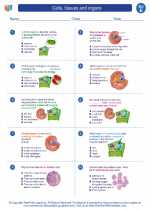
 Worksheet/Answer key
Worksheet/Answer key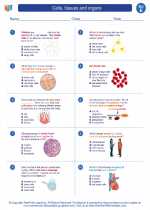
 Worksheet/Answer key
Worksheet/Answer key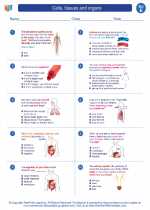
 Vocabulary/Answer key
Vocabulary/Answer key
 Vocabulary/Answer key
Vocabulary/Answer key
 Vocabulary/Answer key
Vocabulary/Answer key
 Vocabulary/Answer key
Vocabulary/Answer key
 Vocabulary/Answer key
Vocabulary/Answer key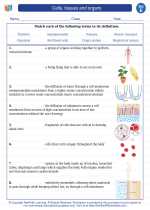
 Vocabulary/Answer key
Vocabulary/Answer key